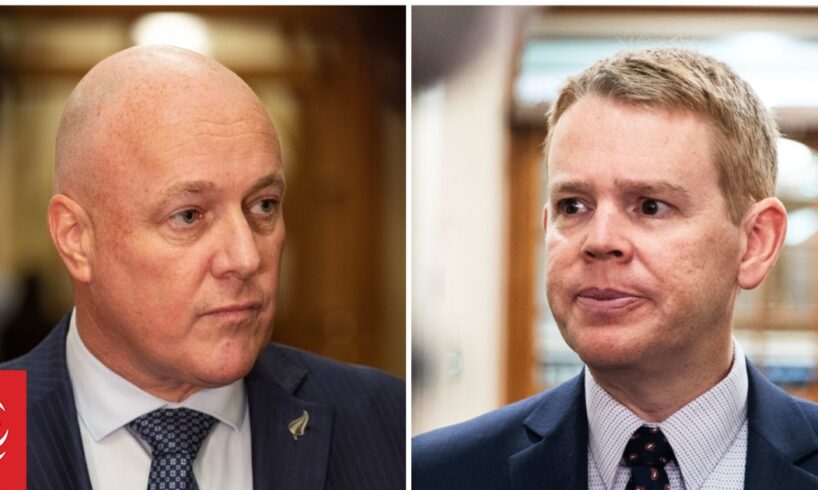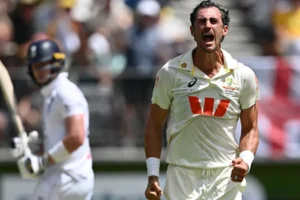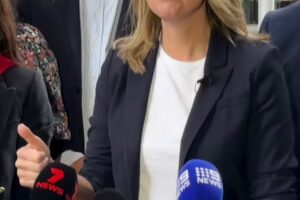
Photo: RNZ
The prime minister says there is no doubt that times are tough, as National drops below 30 percent in the latest Taxpayers’ Union-Curia poll.
The survey gives the centre-left bloc the numbers to take power, but only just.
It was carried out between 1 and 5 October.
Labour has taken a hit, down 2.6 points, but retains its position as the most popular party on 31.2 percent.
National is down 3.5 points to 29.6 percent.
Prime Minister and National Party leader Christopher Luxon would not comment on this specific poll but said times were tough, and the coalition government was making progress on a “two speed” economic recovery.
“No doubt about it, it’s been a tough time. New Zealanders voted me and our government to fix the economy and get it growing. We’re working incredibly hard to do [that].
“I don’t deny it’s been difficult and it’s still tough, but ultimately they’ll get to make their decision in 2026 [as to] whether we’ve done that job or not,” Luxon said.
Meanwhile, National’s coalition partner NZ First has jumped 2.5 points to hit 10.6 percent, while ACT is on 6.6 percent, down by 0.1 points.
On the left, the Greens are on 12 percent (up 1.3 points), and Te Pāti Māori is on 4.4 percent (up 0.1 points).
New Zealand First jumped 2.5 points to hit 10.6 percent, though leader Winston Peters was down one point as preferred Prime Minister to 9.9 percent.
Photo: RNZ / Samuel Rillstone
Those numbers would given the centre-left bloc 61 seats – just enough to form a government. The centre-right would have 59.
Labour leader Chris Hipkins has also taken the lead as preferred prime minister, though support for the leaders of the two major parties remains muted.
Hipkins is on 20.9 (up 3.2 points) while Luxon has dropped 1.9 points to 19.8 percent.
In a statement, Taxpayers’ Union spokesperson James Ross said Treasury’s fiscal forecasts shone both Labour and National in “terrible lights,” with a combined 6.1 percent drop for the major parties.
“Cost of living and the economy are still voters’ major concerns. With the finest of margins between the left and right blocs, tackling these will be key as we head into election year,” he said.
Party leaders respond
New Zealand First leader Winston Peters did not want to comment on the poll as he made his way into the House this afternoon.
“We’re going to turn your polls into confetti,” he said.
ACT party leader David Seymour said he was focused on getting work done.
“It’s been a long, hard winter and yet I know people are going to be judging next year on, have you fixed what matters and done the work so that New Zealand can have a brighter future?”
Labour leader Chris Hipkins said he was encouraged by the increase in support since the last election.
“That bounces around, a percent or two here and there, but the overall trajectory for us has been very positive and it’s been a very negative trajectory for the National Party.”
Greens co-leader Marama Davidson said her party’s policy platform was resonating with voters.
“We are offering the solutions for the things that people are worried about at this time: jobs, free ECE, free GPs, free dental, addressing homelessness, ending poverty and tackling climate action. That’s what people want to hear.”
Te Pāti Māori has been approached for comment.
Party vote
Labour 31.2 percent, down 2.6 percentage points
National 29.6 percent, down 3.5
Greens 12 percent, up 1.3
NZ First 10.6 percent, up 2.5
ACT 6.6 percent, down 0.1
Te Pāti Māori 4.4 percent, up 0.1
Among the minor parties, Freedoms NZ is on 2.3 percent (up 1.5 percentage points), TOP is on 1.6 percent (up 0.5), NZ Loyal on 1.0 percent (up 1.0 point), and Vision NZ is on 0.6 percent (up 0.6).
Broken down by gender, a majority of male voters support the centre-right at 54 percent, whereas 58 percent of female voters support the centre-left.
By age, under 40 year old voters are more supportive of the centre-left at 57 percent, whereas over 60 year old voters are more supportive of the centre-right, at 60 percent.
Green Party Co-leaders Chlöe Swarbrick and Marama Davidson. The party was up 1.3 points to 12 percent.
Photo: Image courtesy of Te Tari o te Kiingitanga
Seats in the House
Labour 40 (down 2 seats)
National 38 (down 4)
Greens 15 (up 2)
NZ First 13 (up 3)
ACT 8 (unchanged)
Te Pāti Māori 6 (unchanged)
This would give the left bloc 61 seats, and the right bloc 59. The poll assumes Te Pāti Māori retains its six electorate seats.
Preferred prime minister
Chris Hipkins 20.9 percent (up 3.2 percentage points)
Christopher Luxon 19.8 percent (down 1.9)
Winston Peters 9.9 percent (down 1.0)
Chlöe Swarbrick 6.3 percent (down 2.5)
David Seymour 4.0 percent (up 0.3)
On whether voters have a favourable opinion of a politician, Hipkins scored the highest with a net favourability of -2 percent, but that was down 4 points compared to the last poll.
Previously, Hipkins had been in positive numbers, dropping negative for the first time since February 2025.
Peters follows at -3 percent, down 5 points.
National Minister Erica Stanford is next highest at -7 percent, while Luxon is at -14 percent down 2 points. Seymour is on -27 percent, down 8 points.
Among Act and New Zealand First voters, Stanford scored higher net favourability than Luxon.
Stanford also fares better than Luxon amongst the centre-left voters, but is still in the negatives.
Act voters scored Stanford at 10.9 percent, while Luxon was at -12.10 percent. New Zealand First voters scored Stanford at 3.8 percent compared to Luxon’s -25.6 percent.
Asked for their top issue, 26.4 percent said the cost of living, following by the economy more generally on 17.4 percent.
Health followed on 10.3 percent, followed by employment on 5.1 percent and poverty on 4.1 percent.
Voters consider National the best party when it comes to all policy issues excluding Poverty, Housing and Health.
Half of voters think the country is heading in the wrong direction, at 50.8 percent, while only 35.8 percent think it is heading in the right direction, 13.2 percent were unsure.
ACT leader David Seymour. The party’s polling was unchanged at 8 percent support.
Photo: RNZ / Marika Khabazi
The poll was conducted by Curia Market Research Ltd for the Taxpayers’ Union. It is a random poll of 1000 adult New Zealanders (700 by phone and 300 online) and is weighted to the overall adult population.
It was conducted by phone (landlines and mobile) and online, has a maximum margin of error of +/- 3.1 percent.13.9 percent were undecided on the party vote question, and 2.5 percent refused the vote question.
Curia is a long-running and established pollster in New Zealand, which has resigned its membership from the Research Association New Zealand (RANZ) industry body.
Polls compare to the most recent poll by the same polling company, as different polls can use different methodologies. They are intended to track trends in voting preferences, showing a snapshot in time, rather than be a completely accurate predictor of the final election result.
Sign up for Ngā Pitopito Kōrero, a daily newsletter curated by our editors and delivered straight to your inbox every weekday.





